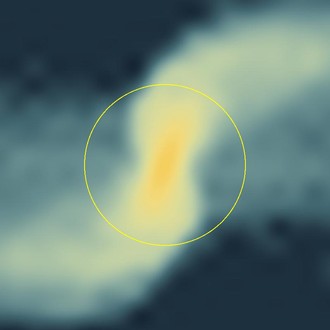
Dwarf galaxies probably form in isolation and only later are accreted by larger galaxies, like the Milky Way, to become their satellites. When a dwarf galaxy, during its orbital motion, passes by the host galaxy, it is influenced by the tidal forces. As a result, it becomes strongly elongated and a fraction of its stars is stripped forming tidal arms. Grzegorz Gajda and Ewa Łokas from the Copernicus Center in Warsaw derived a new formula for the tidal radius, i.e. a distance from the dwarf's center, beyond which its material is lost and begins to orbit independently around the host galaxy. The formula takes into account the shape of the orbit of the dwarf around the Milky Way, as well as the direction of its intrinsic rotation with respect to the direction of its orbital motion. Analytical predictions were compared to the results of N-body simulations and the two were found to agree very well. The figure shows the stellar component of the dwarf galaxy soon after the pericenter passage. The circle marks the tidal radius, beyond which stars no longer belong to the dwarf galaxy. The results were obtained as part of the project “Dynamics and morphology of interacting galaxies” funded by the National Science Centre within the Maestro program. The article "On the tidal radius of satellites on prograde and retrograde orbits", describing these findings, has been submitted for publication in the Astrophysical Journal and is available from the web site.






